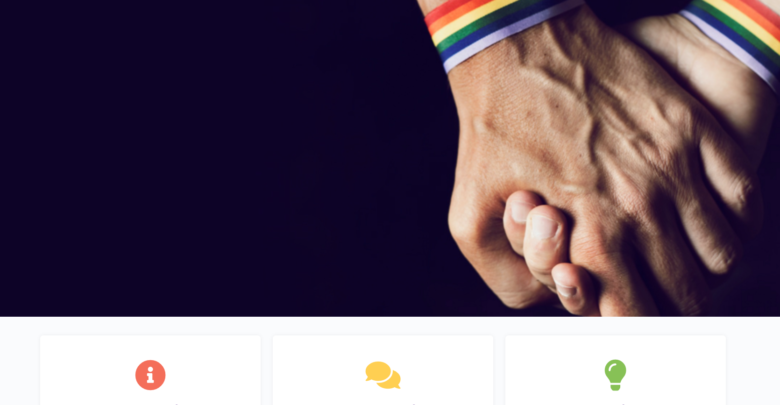New website aims to address gap in LGBTQ2s+ cancer care
The website, queeringcancer.ca, provides resources and a forum for LGBTQ2s+ cancer patients to find community support.
 Rachel Narvey
Rachel NarveyUndergoing cancer treatment can be a traumatic experience, but for many LGBTQ2s+ patients, the myriad ways the medical system fails to accommodate them makes the experience even more difficult.
The new website queeringcancer.ca hopes to address this discrepancy by providing LGBTQ2s+ cancer patients with information and access to community support. The site launched October 27, 2020 and was the product of two years of work helmed by three collaborators.
Amanda Bolderston, one such collaborator, works at the University of Alberta as an educator in the faculty of medicine and dentistry. Bolderston and her colleagues had been observing the barriers LGBTQ2s+ cancer patients encounter in their own research for some time.
“It’s heteronormativity,” she said. “Society, in general, is oriented towards straight, cis-gendered people. They’re just seen as the norm.”
She noted patients are often assumed to be straight and cisgendered, and often have to come out before healthcare professionals correct their assumptions. While coming out can help health providers provide better treatment — and often leads to better experiences from LGBTQ2s+ patients — Bolderston shared that patients will avoid coming out because of previous negative experiences.
“Especially if you’re trans, you may have had negative experiences with health professionals,” she said. “People coming in for cancer treatment are often wary and sometimes they don’t come out because they don’t want to be subject to mistreatment.”
Assigning gender to cancer can cause harm for LGBTQ2s+ patients, said Bolderston
According to Bolderston, cancer is an especially difficult disease for those who do not fit into the narrow terms defined by heteronormativity. This is because of the gendered way that cancer is often understood and presented.
“We often divide things up into women’s cancer and men’s cancer,” Bolderston said. “This makes things really difficult for transgendered patients.”
During the initial stages of the project, the queeringcancer.ca team received a powerful testimonial from a trans man who lived in a rural community.
“He said his treatment of cervical cancer was excellent medically, but emotionally it was terrible,” Bolderston said. “He went to his oncologist looking for support, and his oncologist referred him to a support group for women with cervical cancer. Of course he said ‘well I don’t want to go there, I’d be extremely uncomfortable.’ He just didn’t find the emotional support that he was looking for.”
Healthcare professionals looking to improve
Since the site’s launch, Bolderston says her team has received some feedback on social media from cancer patients, but she was happy to notice that some of the strongest and most widespread feedback has come from healthcare professionals.
“I’ve had quite a lot of contact with people saying they had never thought about the specifics of queer experiences in relation to cancer care ,” she said. “They wanted to learn about the disparities in a bit more detail and educate themselves.”
As a health educator herself, Bolderston has noticed a deficiency in university programming that centres around LGBTQ2s+ people.
“We don’t have it in our undergraduate program, and we have a four year medical program with probably six hours of content on LGBTQ2s+ healthcare,” she said. “It’s not enough.”
That discrepancy in education translates into real-life insufficiencies in the support health care workers can provide.
“There’s awkwardness,” Bolderston said. “[Health care providers] don’t want to ask, they don’t want to make assumptions, and they don’t know what to say.”
Ultimately, Boldsertson hopes queeringcancer.com can begin to turn the tide.
“We know that when gay patients or queer patients have these parts of their identity honoured, they do better psychologically,” she said. “They’re more comfortable, they have more appropriate treatments. In a way, it benefits everybody that we treat people like the individuals they are.”




